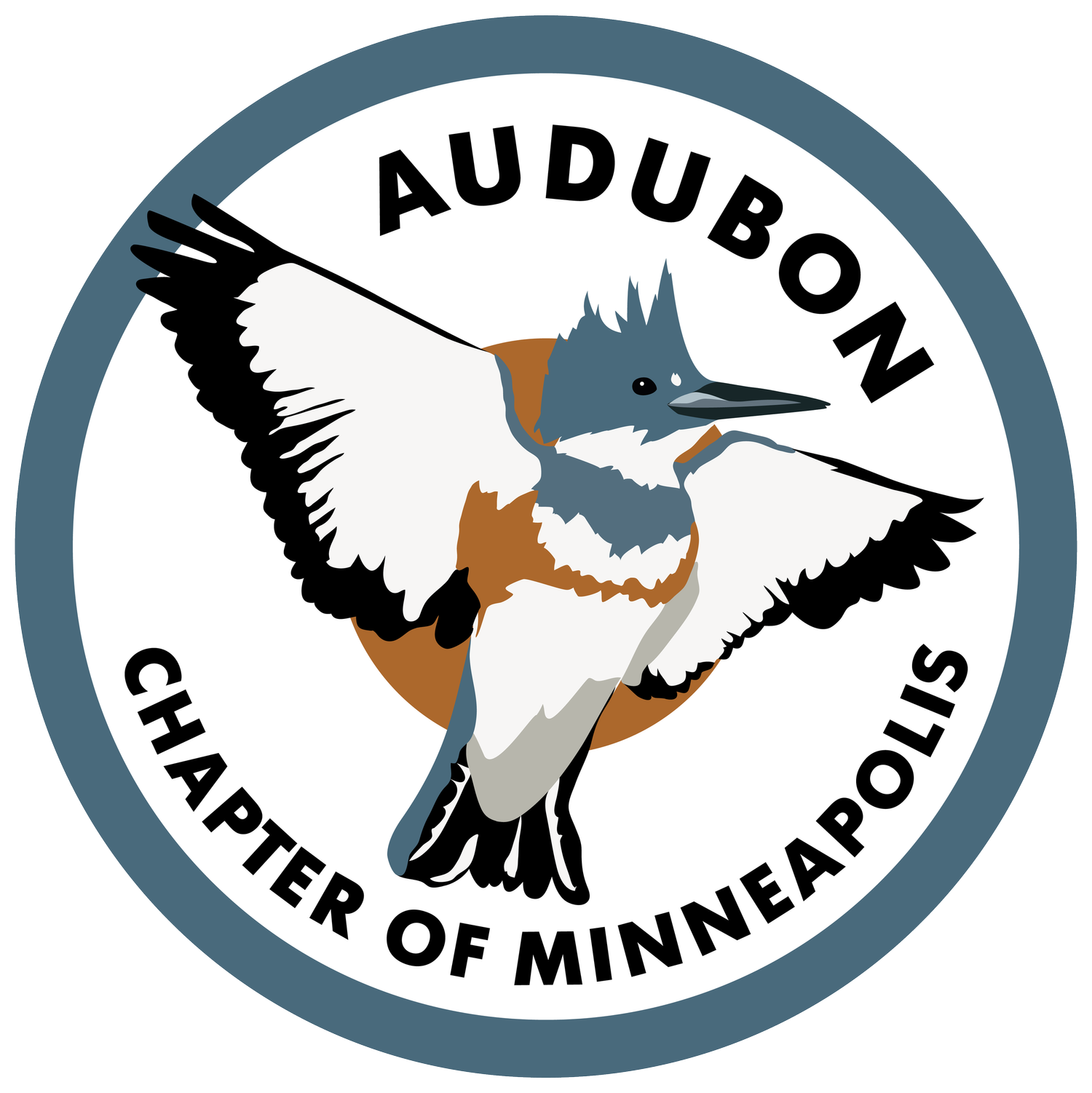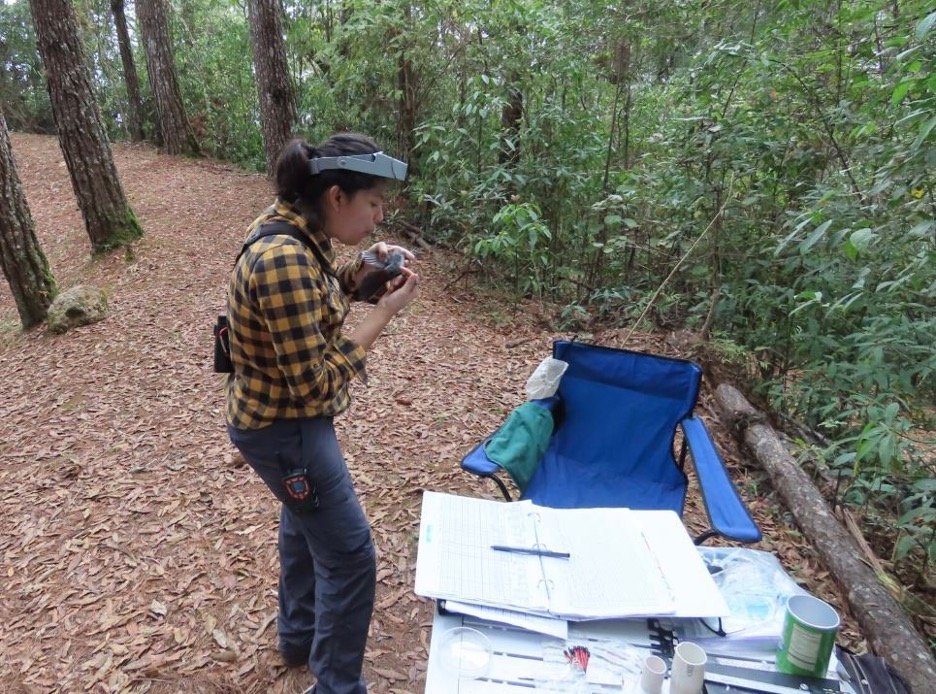Bird monitoring in the Uyuca Biological Reserve: The first six months
A report from our Migration Partners, Aves Honduras
In February 2010, we started the Landbird Monitoring program in the Uyuca Biological Reserve. The first phase of the monitoring lasted three continuous years and was carried out under the Terrestrial Bird Monitoring program, an effort from a Salvadoran NGO called SalvaNATURA, with the support of the Zamorano Biodiversity Center. From the beginning, bird monitoring in Uyuca was part of the Winter Survival Monitoring program for migratory land birds, better known by the acronym MoSI, promoted by The Institute for Bird Populations.
MoSI is a collaborative effort of ~200 bird-banding stations across Latin America to better understand why declines occur and the biology of migratory landbirds’ annual cycle. A MoSI station is a discrete study site of approximately 12 hectares. Currently, Uyuca is the only banding station in the Central American Highlands, one of the 15 regions delimited by the MoSI program. Uyuca is also the only MoSI station in Honduras.
Fast forward — ten years later
Since November 2021, the same team of banders, as members of the Honduran Association of Ornithology and the Zamorano Center for Biodiversity, and with financial support from the Audubon Chapter of Minneapolis, have resumed monthly monitoring of landbirds in Uyuca. Bird monitoring in Uyuca is carried out following the MoSI protocol. This protocol consists of visiting the monitoring station once a month, placing and operating 16 mist nets for 25 hours of sampling.
The nets are placed in the same location each month, open approximately 15 minutes after local sunrise, and, in the absence of rain or strong wind, remain open until approximately 1.5 hours before local sunset. Approximately every hour we check the nets, extract and transport the birds that have been captured to a nearby site where they are processed. The processing of a bird consists of identifying it, marking it with a unique number ring and collecting a series of measurements and biological data on a form that serves as a guide, and then releasing it.
Banding team leader Roselvy Juárez processing a bird at the Uyuca Biological Reserve MoSI monitoring station, Francisco Morazán. Photo by John van Dort.
During the first three years of bird monitoring in Uyuca, we banded 1,616 individuals and processed 1,318 hummingbirds. In Uyuca we do not band hummingbirds, but we mark them by cutting approximately two millimeters from an outer tail feather. We are banding under a special banding permit granted by the Honduran government, which includes all land birds. However, banding hummingbirds requires bands specially made for the species of interest, given the very small size and thinness of their legs. Therefore, we mark our hummingbird captures in the aforementioned way, which does not impact them, but allows us to distinguish between captures and recaptures, thus avoiding pseudo-replication of data.
During the second edition of the monitoring in Uyuca, in the first six months we have banded 304 individuals of 47 species of birds, including 13 species of migratory birds from North America. Additionally, we have processed 236 hummingbirds. Of the total number of marked birds, we have recaptured 235 individuals. The number of birds processed per month, between new captures, recaptures and hummingbirds, varies between 110 and 160 individuals.
Adult male golden-winged warbler, a migratory species of conservation concern. Photo by John van Dort.
Notable captures
The most interesting captures include migratory species such as Wood Thrush (Hylocichla mustelina), Golden-winged Warbler (Vermivora chrysoptera), Canada Warbler (Cardellina canadensis), and Worm-eating Warbler (Helmitheros vermivorum), all species of interest to the MoSI program. The capture of two male and one female Golden-winged Warbler is especially noteworthy because this species is one of the species that most directly shows the link between the donor and the Uyuca station, and with Honduras in general. According to data modeled by eBird Science, Minnesota is the primary state for the species during the breeding season and Honduras is the most important country for the species during the non-breeding season. Birds definitely bring us together.
A very notable capture during the first six months was the Slaty Finch (Spodiornis rusticus). Slaty Finch is a species presumed to be resident in Honduras and little is known about its biology.
Immature male Slaty Finch, captured (and released) on March 23, 2022. A rare and little known species. Photo by John van Dort
Research questions
Resident birds make up approximately 85% of the catches at Uyuca, and monthly monitoring gives us the opportunity to study basic life history aspects for many poorly known resident species. To give a few examples, we are learning when resident birds develop breeding indices, when juveniles enter the population, when and how resident birds molt, and even about movements at local scales in response to changes in resource availability through throughout the year. This information cannot be collected from bird observations alone.
Because the focus of the MoSI program is migratory birds, MoSI stations must commit to data collection from November through March. However, because we are interested in learning more about our resident birds, the Uyuca station is operated throughout the year. We are especially interested in the hummingbird community, which includes a species almost endemic to Honduras, Green-breasted Mountain-gem (Lampornis sybillae). For this reason, since January of this year we have been collaborating with a biologist, Rina Fabiola Díaz, who is particularly interested in the interactions between plants and hummingbirds. In parallel with bird monitoring, Rina is investigating the availability of resources for hummingbirds.
Flowering of Palicourea padifolia, a highly important food resource for the bird community in Uyuca. Photo by John van Dort.
During the first three years, we noticed that the capture rates of several resident species of hummingbirds show notable variation throughout the year. Peaks in our capture rates of them at the site have always coincided with the flowering of Palicourea padifolia, an abundant shrub in the monitoring area. After flowering, this plant produces fruit, and capture rates for hummingbirds drop while capture rates for frugivores such as Mountain Elaenia (Elaenia frantzii) , Black Thrush (Turdus infuscatus), and Mountain Thrush (Turdus plebejus) increase. This time, with Rina's support, we are collecting quantitative data on the availability of food resources, so that we can then describe these interactions in food chains for science.
We are very grateful to the Audubon Chapter of Minneapolis (ACM) for financial support of the Uyuca Landbird Monitoring program. Many thanks to the Institute for Bird Populations, especially Steve Albert for his efforts to ensure that the Uyuca station is part of the MoSI program. Special thanks to Wilmer Fernández for the management of funds through ACM, and to Manfredo Turcios, coordinator of the Wildlife component of the Francisco Morazán Forest Region (ICF), for his assistance with the management of the research permit.
Roselvy Juarez and John van Dort, AvesHonduras and Zamorano Biodiversity Center





